Best AI laptop for 2025 — tested and rated
Here are the best AI laptops we've tested

When looking for the best AI laptop, your needs can span far and wide — whether it's looking for enough power to generate a visual masterpiece with a complex prompt, or a power-efficient system that can handle basic AI-driven tasks and chatbots without draining the battery.
That's why I put every laptop through a complex set of AI tests to help find the best ones for you — whether you're already an experienced power user in the likes of Anthropic and ComfyUI, or you're just setting off into the world of ChatGPT.
My top picks
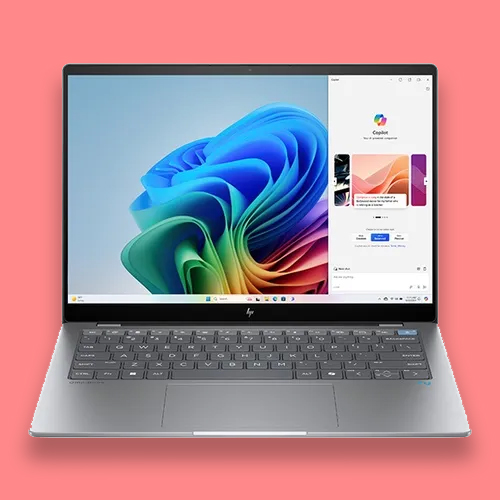
The best of the bunch when it comes to consumer AI, the HP Omnibook X packs a powerful Snapdragon X Elite chip that supercharges AI tasks while keeping them power efficient, thanks to that beefy NPU.

AI for pros is not just about a power-efficient NPU: A dedicated GPU also gives you serious horsepower for the most complex tasks like video generation. For that reason — for all creative pros and AI experts — the Asus ProArt P16 does it all with the latest AMD Ryzen AI CPU and RTX 4070.
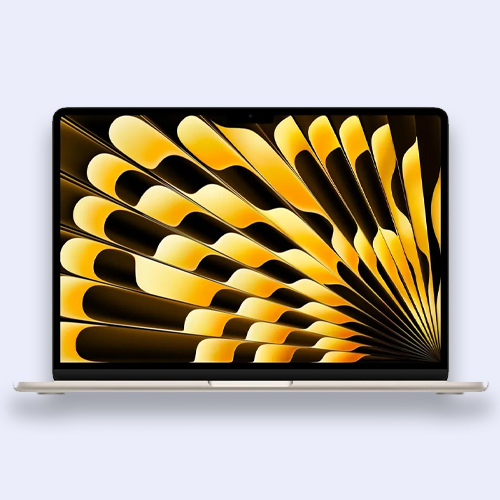
Provided you pick the option with 16GB RAM and 1TB storage, the M3 MacBook Air is a powerhouse of an AI ultraportable that we confidently use with key models, and is set to only get better with Apple Intelligence.
Of course, AI laptops can come in all shapes and sizes with different capabilities. So to find the right one for you, there's really only one important question to ask yourself.
How do you actually use AI?
We conducted a recent survey and found that 51% of Americans claim to use AI in their day-to-day life. A lot of this will be in the form of the small things running through our everyday apps, whether its that subtle background blur on your webcam or maintaining eye contact when you're looking at your screen.
If this is about as far as you go with it, with maybe the occasional interactions with Copilot or Apple Intelligence, you will only need an NPU like what you find in the HP Omnibook X or M3 MacBook Air.
But if you are going more advanced with the likes of offline large models for image generation, you need some real GPU grunt from something like the Asus ProArt P16 or M4 Pro MacBook Pro.
But these aren't the only choices. Read on for more detail on my personal picks for best AI laptops.
The best overall

Specifications
Reasons to buy
Reasons to avoid
Why is this the best overall AI laptop?
Why you can trust Tom's Guide
The main focus of Copilot+ PCs is that NPU giving you over 40 TOPS of AI performance, as to not drain the battery by relying on the CPU to complete these tasks. While there are a lot of options, the HP OmniBook X nails the fundamentals with great performance and an astonishing battery life.
AI performance by the numbers
AI benchmark | Score |
|---|---|
Geekbench AI CPU test (Quantized Score) | 4440 |
Geekbench AI QNN test (Quantized Score) | 19071 |
Geekbench ML GPU test (DirectML) | 2148 |
Analyzing the numbers
The HP Omnibook X is perfect for general AI use. That NPU is optimized to complete AI and machine learning tasks that happen in the background when using Windows 11.
Whether it's quickly creating visual content through Paint CoCreator, upgrading the webcam quality by analyzing the picture, improving the built-in microphone quality, or brainstorming with Copilot, the high bandwidth allows for real-time AI interactions that react quickly to any prompt you throw at it.
Read our full HP OmniBook X review.
The best for power users

Specifications
Reasons to buy
Reasons to avoid
Why is this the best AI laptop for power users?
This 4K OLED masterpiece of a laptop is not only a great option for creative pros (its raw horsepower and touch dial are great for detail-rich work), but the massive NPU of the AMD Ryzen AI 9 CPU paired with the dedicated RTX 4070 GPU make this a powerhouse for advanced AI tasks too.
AI performance by the numbers
AI benchmark | Score |
|---|---|
Geekbench AI CPU test (Quantized Score) | 5249 |
Geekbench AI GPU test (Quantized Score) | 13855 |
Geekbench ML GPU test (DirectML) | 12715 |
Analyzing the numbers
While an NPU is effective at completing the day-to-day AI tasks, you need the brute force of a GPU to really take things to the next level. The power pairing of AMD Ryzen AI 9 HX 370 and RTX 4070 in this machine enables huge amounts of AI processing capability (up to 321 TOPS to be exact).
This means whether you're looking to make the most of creative AI tasks like complex text masking in Adobe Premiere Pro video edits, or you even want to train your own AI model, the vast amounts of parallel task completion power here makes this a serious monster for these purposes.
Read our full Asus ProArt P16 review.
Best value
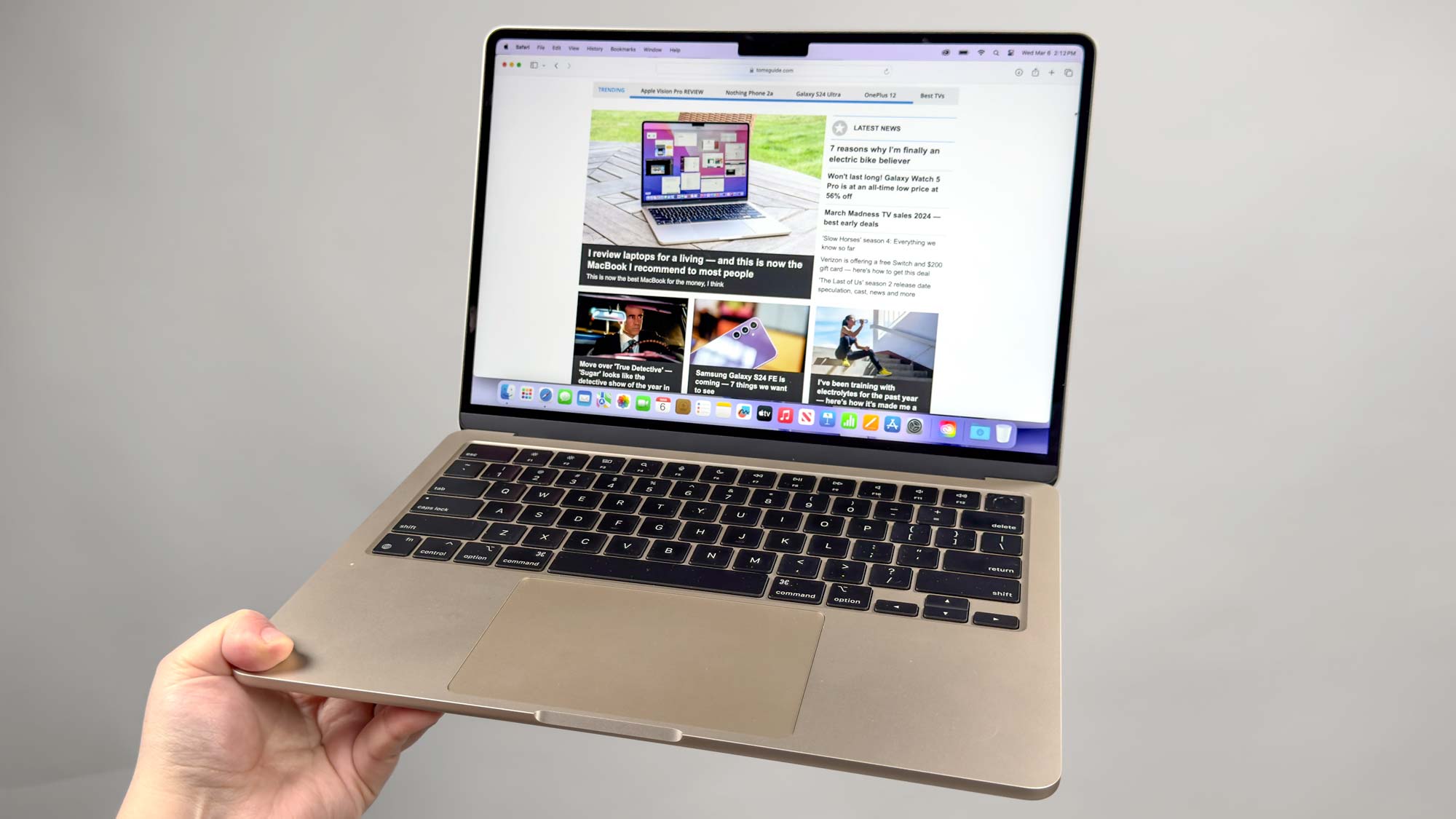
Specifications
Reasons to buy
Reasons to avoid
Why is this the best value AI laptop?
For years now, Apple has packed a Neural Engine into its MacBooks (translation: an NPU) and the M3 MacBook Air is being branded as “the best consumer AI laptop.” Given the AI performance we see in our testing, paired with the value for money (there are a lot of great M3 Air deals on right now), we're inclined to agree.
AI performance by the numbers
AI benchmark | Score |
|---|---|
Geekbench AI CPU test (Quantized Score) | 4694 |
Geekbench AI GPU test (Quantized Score) | 6841 |
Geekbench ML Neural Engine test (DirectML) | 8047 |
Analyzing the numbers
The MacBook Air is all about balance in AI performance. The CPU and Neural Engine are effective at running all those Apple Intelligence tasks locally — from rewording text and summarizing audio recordings to the Image Playground.
Meanwhile, the GPU can hold its own in some of the more intensive AI workloads like enhancing light and color in video footage using Final Cut Pro.
Just one quick heads up, though. In our own testing, the base model with 8GB RAM and a 256GB SSD is not enough for your standard model to run effectively. Our AI editor Ryan Morrison is regularly running into problems maxing out its capabilities. So to really make the most of AI on the MacBook Air, you’ll need 16GB RAM.
Luckily, Apple has noticed that and made it's base model come with 16GB as standard now. But just pay attention, as some deals are only on the 8GB model.
Read our full 13-inch M3 MacBook Air review.
The best AI Chromebook
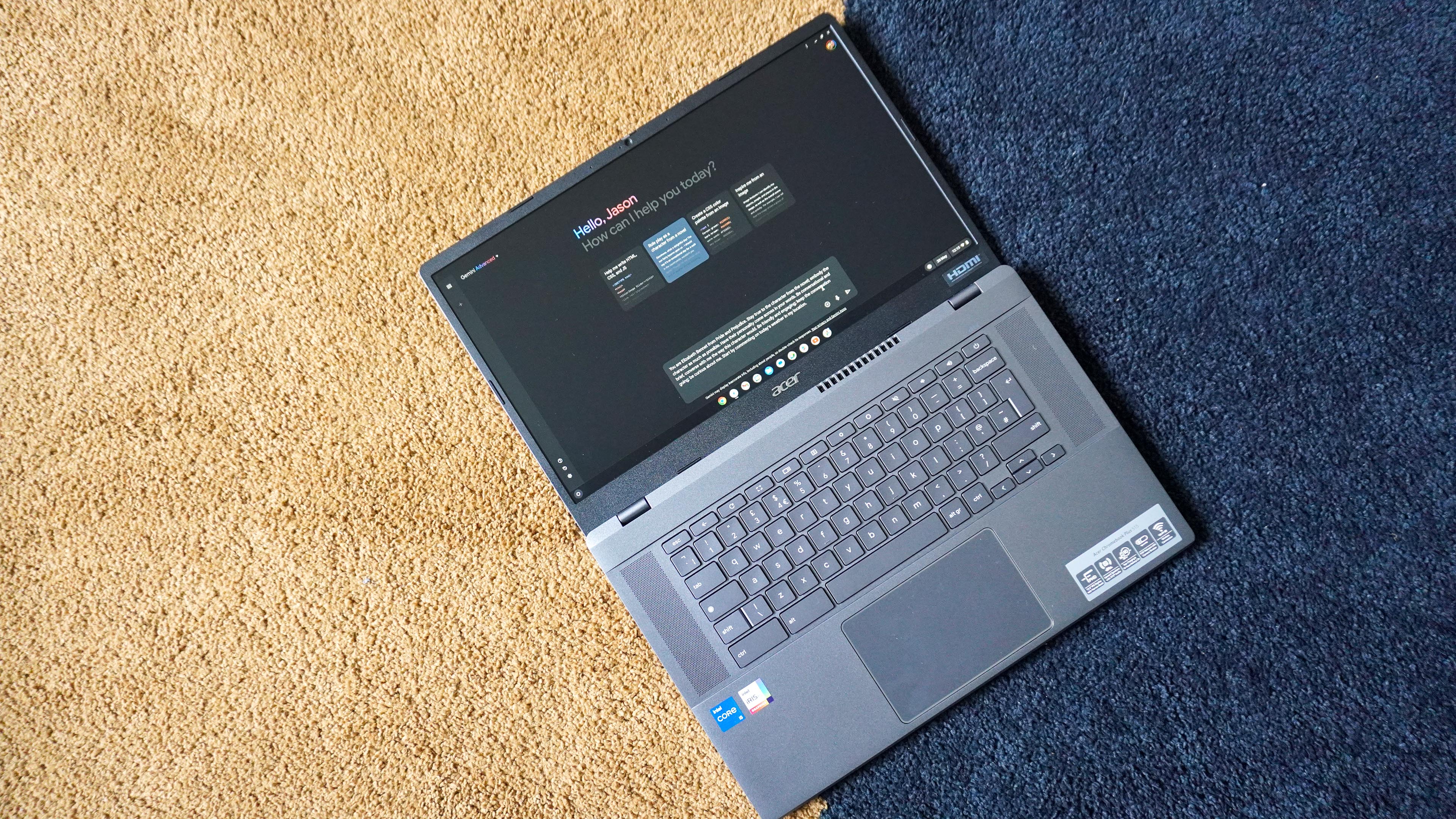
Specifications
Reasons to buy
Reasons to avoid
Why is this the best AI Chromebook?
To get the best Chromebook AI features, you need to shell out for a Chromebook Plus system. However, with the Acer Chromebook Plus 515, you're not going to be spending much at all. In fact, this is the cheapest way to get into an AI PC experience — all in a sturdy laptop with a big 1080p display and stellar ergonomics.
AI performance by the numbers
Benchmark | Score |
|---|---|
Geekbench 6 single-core | 1767 |
Geekbench 6 multi-core | 5378 |
WebXPRT 4 | 266 |
Analyzing the numbers
Of course, with a Chromebook, nearly all of its AI features happen over the cloud. So for something like this, it's especially important that its browser performance is good to do this.
With WiFi 6, the Chromebook Plus 515 establishes a strong, stable connection that enables impressive real-time interactions with Gemini for all your needs. Plus, ChromeOS is easily the most sleek implementation of AI directly into the desktop UI I've seen — with rewriting, summarizing and researching options implemented directly into the right click function menu.
And if you need to do anything creative, there may not be the GPU brunt to do anything significant, but for quick photo edits and even some more generative features like moving subjects in photos, the highly optimized AI workstreams are delivered rapidly over the cloud.
Read our full Acer Chromebook Plus 515 review.
The best Windows AI PC

Specifications
Reasons to buy
Reasons to avoid
Why is this the best Windows AI laptop?
As the AI silicon wars heat up, Intel has thrown its hat into the ring with one of the best AI-centric chips you can find in a laptop — packed into the gorgeous Dell XPS 13. What matters here is that NPU and next generation Xe2 integrated GPU packing a serious amount of TOPs that can get the job done in short order.
AI performance by the numbers
AI Benchmark | Score |
|---|---|
Geekbench AI CPU test (Quantized score) | 3771 |
Geekbench AI GPU test (Quantized score) | 4201 |
Geekbench AI NPU test (Quantized score) | 25562 |
Analyzing the numbers
The NPU on-board in the new generation of Intel Core Ultra is one thing, but pair that with a drastically upgraded GPU with Intel Arc graphics and you've got a solid all-in-one AI machine — capable of a combined total of 68 TOPS of AI performance.
What all of this means in real world use is that thanks to Intel AI Boost, not only are you getting all those general AI tasks completed in speedy real-time (even allowing for space to be able to run a local model), but that GPU is capable of completing more generative-based AI tasks like those same machine learning-based video editing workloads.
Read our full Dell XPS 13 (Lunar Lake) review.
The best Macbook for AI
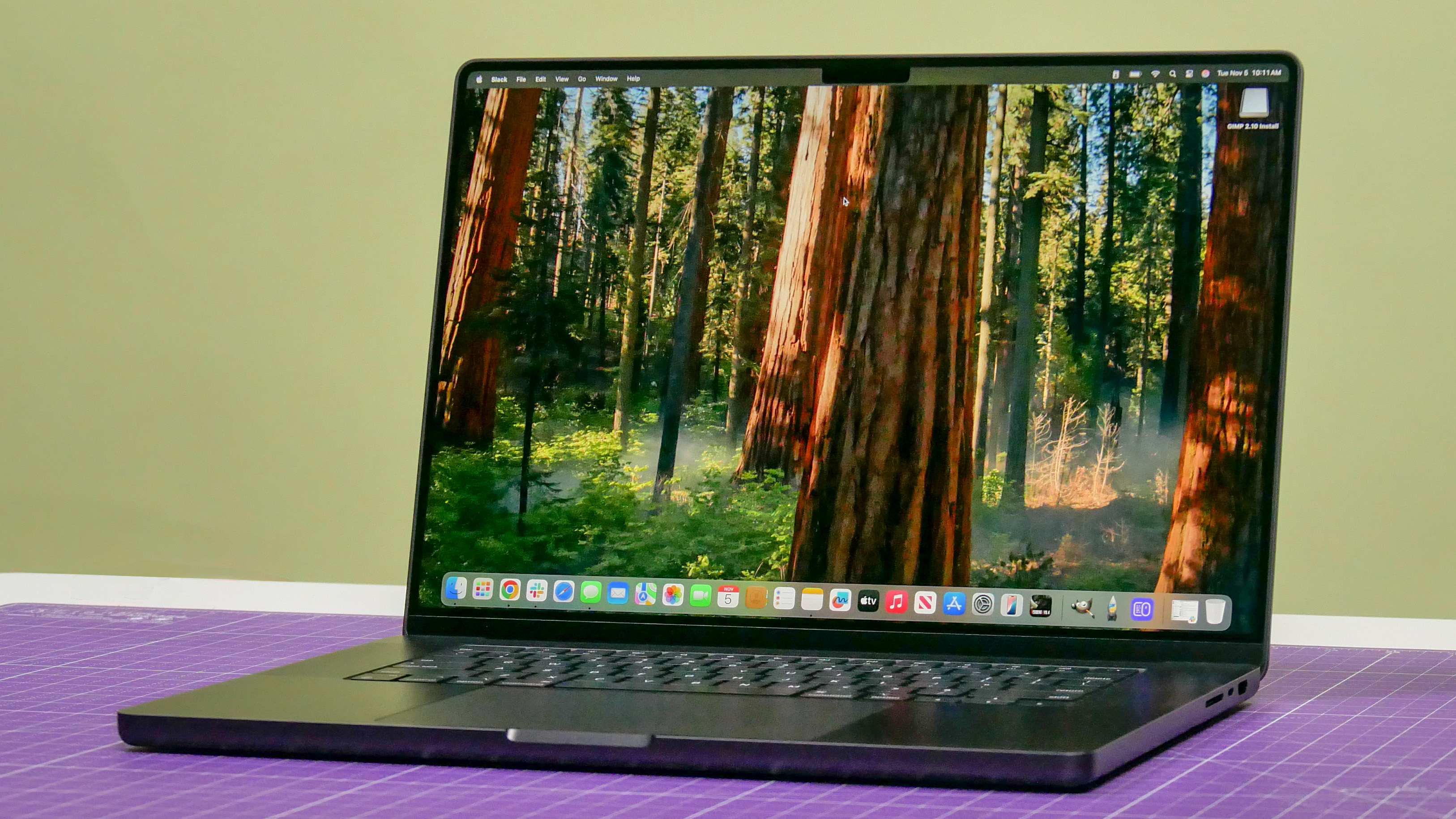
Specifications
Reasons to buy
Reasons to avoid
Why is this the best AI MacBook?
The M4 Pro MacBook Pro isn't just a great daily driver for prosumers, it's also a great AI PC too that will run all the Apple Intelligence features at their most breakneck speeds. Machine Learning tasks are handled rapidly by that Neural Engine — allowing you to truly speed up your workflows using all the brand new ML tools in Final Cut Pro 11.
AI performance by the numbers
AI Benchmark | Score |
|---|---|
Geekbench AI CPU test (Quantized score) | 6882 |
Geekbench AI GPU test (Quantized score) | 15110 |
Geekbench AI NPU test (Quantized score) | 49570 |
Analyzing the numbers
Whether it's running complex AI models locally on the MacBook Pro, such as the 32-billion parameter Qwen2.5 coder LLM, or advanced generative options like StableDiffusion running entirely on-device, the M4 Pro MacBook Pro is capable of doing it all.
The combination of 14-core CPU, 20-core GPU and that Neural Engine that is up to 4x faster than your standard AI PC makes for mind blowingly fast interactions with Apple Intelligence. But on top of that, even for those intense AI moments of local deep research or even machine learning-driven 3D animation, there is no sign of slowdown.
Of course the best of the best would be to get an M4 Max model, but the Neural engine gains between Max and Pro are super marginal — meaning you're getting a better AI price-to-performance ratio by opting for the mid-range chipset.
Read our full M4 Pro MacBook Pro review.
How we test AI laptops
To choose the best laptops for AI, we put each one through its paces with some brutal testing. Let me explain all the tests you saw above.
- Geekbench AI CPU test (Quantized score): The CPU's main purpose is more generalized towards keeping your laptop running smoothly. But as AI becomes more and more fundamental to the entire system, it's important that these cores are ready to handle machine learning applications. The Quantized score is the mean result of how well the device performed across a whole set of AI tests.
- Geekbench AI GPU test (Quantized score): For the more advanced generative side of things like video editing, the Geekbench AI GPU test puts the graphics card (or integrated graphics) to the test, to see how performant it is for all the parallel tasks that need to be completed in machine learning.
- Geekbench AI NPU test (Quantized score): Whether it's the Neural Engine on a MacBook or the NPU on a Windows laptop, this part of a chip is purpose-built to handle AI tasks and offload that pressure on the CPU. The faster this is, the better your system will be at those day-to-day AI tasks like webcam picture improvement.
There is one exception, though. Chromebooks do not have AI benchmarking tests available, and since all of its AI tasks are completed entirely on the cloud, the main thing to consider is WiFi speed here.

I've used laptops for 18 years and reviewed them for over 4 years — the AI PC movement is easily one of the biggest tectonic shifts in this space. Whatever your skill level with AI, there's a system for you that suits your needs — from completing simple tasks to complex prompt-driven generation.
Sign up to get the BEST of Tom's Guide direct to your inbox.
Get instant access to breaking news, the hottest reviews, great deals and helpful tips.

Jason brings a decade of tech and gaming journalism experience to his role as a Managing Editor of Computing at Tom's Guide. He has previously written for Laptop Mag, Tom's Hardware, Kotaku, Stuff and BBC Science Focus. In his spare time, you'll find Jason looking for good dogs to pet or thinking about eating pizza if he isn't already.
